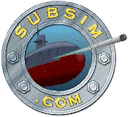|
|
 Royal
Navy Submarine: 1945 to 1973 ('A' class - HMS Alliance) Owners' Workshop
Manual Royal
Navy Submarine: 1945 to 1973 ('A' class - HMS Alliance) Owners' Workshop
ManualAuthor: Peter
Goodwin I have a love-hate relationship with Haynes. The English publishing giant, well-known for its do-it-yourself automotive manuals which have left thousands of Americans trying to figure out where the car's their car's "bonnet" is, has taken a different tack over the last decade. Along with their "real" manuals, they've published a whole slew of faux "workshop manuals" on vehicles that are either fictional or close-to-impossible to actually own. These range from the Millennium Falcon, to the Tiger tank, Routemaster bus, Lancaster bomber, and Gemini spacecraft. Gimmicky novelty book format aside, a lot of these books are actually quite good, sometimes exceptionally so. They manage to combine historical, technical, and operational details into an attractive package, and are often quite detailed and informative without being dry and overbearing. I currently own an embarrassingly large collection of these books, so when I found out early in 2014 they were going to be doing a "manual" on the Type VII U-boat, I was thrilled. Imagine my disappointment when the book was actually published, and it contained very little of the in-depth technical details that makes this series so fascinating. There were almost no technical diagrams, and the book was riddled with goofy historical and technical errors. Jump forward to April, and Haynes publishes their "workshop manual" on the A-class submarine Alliance, the centerpiece of the Royal Navy Submarine Museum and the only surviving World War II British submarine. After the U-boat manual fiasco, I was awfully skeptical about any more naval titles from Haynes. Here's the good news: Royal Navy Submarine is better, sometimes substantially so, than the U-boat manual, in pretty much every way. Peter Goodwin is a former Royal Navy submariner and acclaimed naval historian, and having written a Haynes manual on the HMS Victory in 2012, delivers the goods this time around. This book feels like a genuine apology to this submarine geek and Haynes fanboy. Although it contains brief sections covering the development of Britain's submarine fleet, Alliance's operational history, and what it was like to live and work aboard, the bulk of this book is a straight-up technical reference. Along with descriptions of many of the boat's major and minor systems and how they work, are procedures for carrying out evolutions such as diving the boat and firing torpedoes, and dozens of detailed color technical diagrams from the BR.1963 series technical manuals used by the crew. The overall level of detail is quite impressive, more than you'd probably expect from a "novelty book." A quick flip through this book reveals procedures for starting and running the high-pressure air compressor, diagrams of the air conditioning plant and distilled water system, exploded views of the propeller shaft and stern glands, a 17-step procedure for cleaning the centrifugal oil separator, specifications for the boat's guns, advice on periscope maintenance, and a breakdown of the crew complement in 1956. Unlike the U-boat manual, this book is very carefully put together and geared more towards people interested in the "hows and whys" of what makes a submarine work. There's even an entire chapter of step-by-step operating procedures, a chapter on the boat's recent £7 million restoration, and numerous photographs of the restored interior. The detailed procedures, diagrams, and descriptions elevate this title and make it a fascinating reference for serious submarine buffs. I'm glad that Haynes is finally getting away from the fluffy novelty books that has marred this series in the past, and producing works that stand up to actual scrutiny. I've been really enjoying Haynes' output this year, their somewhat mediocre "manual" on the Chinook being the only real disappointment so far. There are, unfortunately, a couple of minor hiccups. Haynes has been sacrificing the production quality of their books recently. This one has no endpapers, the pages are glued directly into the spine without any stitching, and the last page is glued directly onto the back cover. I'm not sure how much abuse it can actually handle. For a technical study of a submarine, there's precious little on the boat's radar, sonar, and radio systems - barely a page, in fact! Bizarrely, all of the centigrade-to-Fahrenheit conversions are out of wack. Finally, I noticed a couple examples of photographs and diagrams being repeated in different parts of the book. A couple nagging flaws aside, THIS is the book I was hoping the U-boat manual was going to be. It's not certainly not a true "workshop manual," but it contains a lot of useful technical material in a refreshingly colorful and modern style. There aren't many detailed technical books on World War II submarines out there, but I can easily recommend this one, along with John Lambert's "Anatomy of the Ship" book.
|

